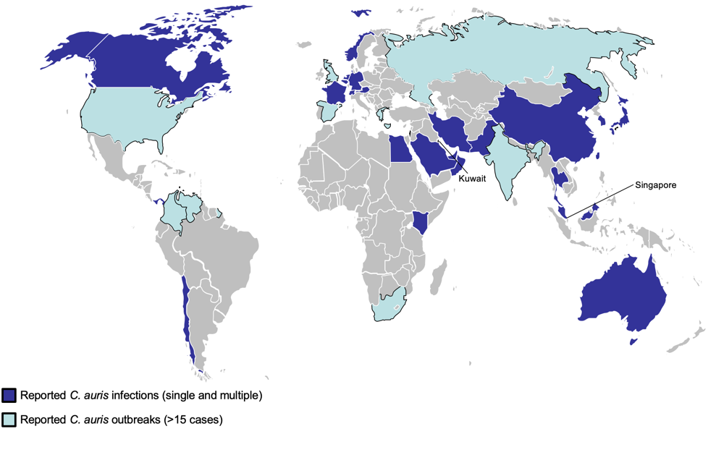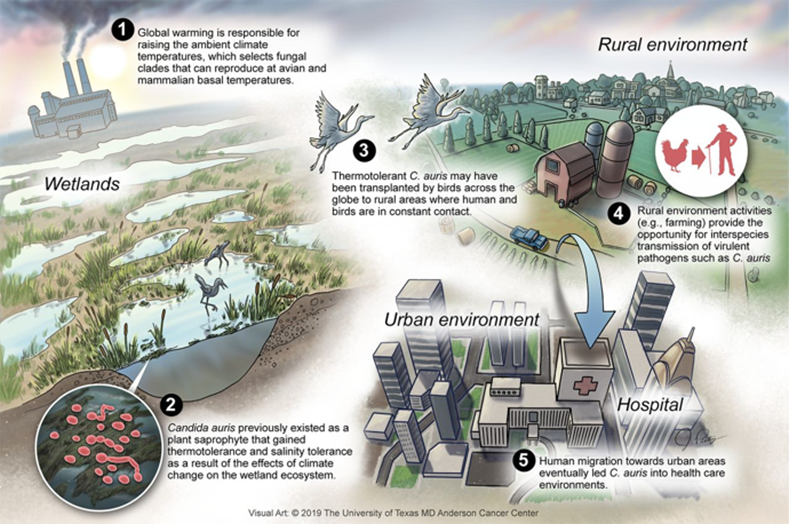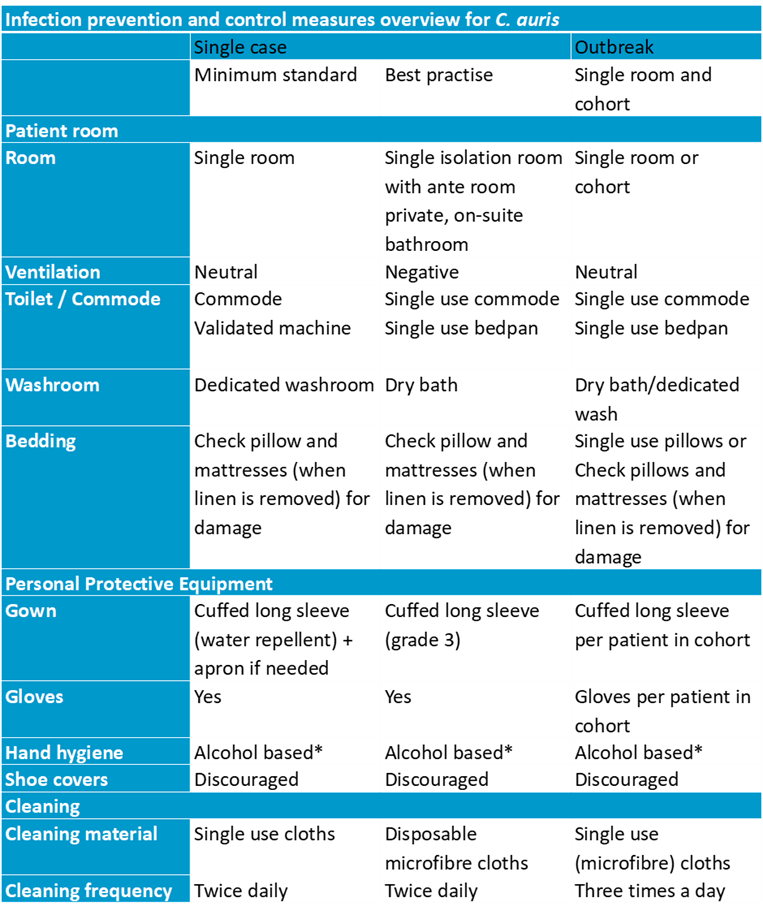
Multidrug resistant Candida auris emerged in 2009. So far, it has been identified in the countries displayed in Figure 1 below.1 C. auris can cause invasive infections (for example, bloodstream infections).
Figure 1: World map highlighting reported C. auris infections including single and multiple case reports, and outbreaks (published and unpublished). N. Kenters et al.


So, where did the superbug come from? One convincing theory involves global warming (Figure 2).2 With scientists predicting no stop to global warming, C. auris will likely keep on spreading worldwide.
Figure 2. Proposed scheme for the emergence of C. auris.

When I presented our work on C. auris at the IPS conference last September in Liverpool, I asked how many people from the audience would be ready for a first (un)expected C. auris case: only two hands were raised. Of course, there are some similarities between dealing with an unexpected case of C. auris in your hospital and dealing with the multidrug resistant bacteria and viruses that we are used to. However, C. auris is a fungus and there are some key differences.
In the Netherlands, we already screen for multidrug resistant organisms (including VRE and MRSA) when patients have been admitted to an overseas hospital within the past two months. However, C. auris was not included in the standard screening. On top of that, C. auris is often misidentified.
We have therefore developed, in an expert meeting, a set of recommendations on the most common interventions needed to handle a single case or outbreak of C. auris, including: screening policy, standard precautions, extra precautions, cleaning and disinfection, inpatient transfer, outbreak management, decolonization and treatment of C. auris (Table 1).1
Table 1. Overview of infection prevention and control measures for C. auris cases and outbreaks. N. Kenters et al.

*products need to meet the EN1500 testing standard
For cleaning and disinfection of the patients’ infected zone it is important to use a product that is effective against C. auris, for example hypochlorite or hydrogen peroxide <1%.
Hopefully in the near future all hospitals in the United Kingdom can be made ready for the possibility of a first C. auris case - especially now that a new superbug, Candida blankii, is emerging in India.3 On a neonatal unit four out of nine patients died of a Candida blankii infection.
Will this be the next Candida superbug to take over the world?
Nikki Kenters
1. Control of Candida auris in healthcare institutions: Outcome of an International Society for Antimicrobial Chemotherapy expert meeting. Nikki Kenters, Martin Kiernan, Anuradha Chowdhary, David W. Denning, Javier Pemán, Katja Saris, Silke Schelenz, Ermira Tartari, Andreas Widmer, Jacques F. Meis, Andreas Voss, International Journal of Antimicrobial Agents. 2019, 54:4. 10.1016/j.ijantimicag.2019.08.013
2. On the Emergence of Candida auris: Climate Change, Azoles, Swamps, and Birds.
3. Candida blankii: an emerging yeast in an outbreak of fungemia in neonates in Delhi, India. Anuradha Chowdhary, J. Benjamin Stielow, Gargi Upadhaya, Pradeep K. Singh, Ashutosh Singh, Jacques F. Meis. Clinical Microbiology and Infection. 2020 (in press).